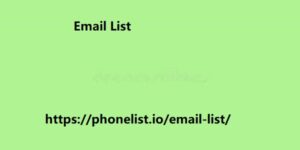The Ultimate Guide to Discovering Profitable Lead Sources
In today’s competitive business landscape, generating high-quality leads is crucial for driving sales and growth. The right lead sources can significantly impact your bottom line. Here’s a comprehensive guide to help you discover profitable lead sources for your business:
Define Your Ideal Customer Profile (ICP)
Identify key characteristics: Determine the demographics, psychographics, and behaviors of your target customers.
Understand their pain points: Identify the problems, challenges, or needs that your product or service can solve.
Define your buyer journey: Map out the steps your ideal customer takes before making a purchase.
Conduct Thorough Market Research
Analyze your industry: Understand the trends, challenges, and opportunities in your industry.
Identify competitors: Research your competitors’ lead generation strategies and identify areas where you can differentiate.
Study your target market: Learn about your target audience’s preferences, behaviors, and online habits.
Leverage Existing Customer Data
Analyze customer data: Use your CRM system to identify patterns and trends in your existing customer base.
Segment your Email List customers: Group your customers based on demographics, interests, or behavior to tailor your lead generation efforts.
Ask for referrals: Encourage satisfied customers to refer your business to their friends and family.
4. Utilize Digital Marketing Channels
Content marketing: Create valuable content that attracts and engages your target audience.
Search engine optimization (SEO):
Optimize your website and content to improve search engine rankings.
Pay-per-click (PPC) advertising: Use platforms like Google Ads and Bing Ads to target specific Telegram Database Users Resource keywords and demographics.
Social media marketing: Engage with your target audience on social media platforms.
Email marketing: Build and nurture an email list to stay connected with potential customers.
5. Explore Offline Channels
Networking events: Attend industry conferences, trade shows, and networking events.
Partnerships: Collaborate with complementary
Businesses to cross-promote and reach new audiences.
Public relations: Generate media coverage to increase brand awareness and attract leads.
6. Utilize Lead Generation Tools
CRM software: Track leads, manage interactions, and analyze sales data.
Lead generation tools: Use tools like LinkedIn Sales Navigator or ZoomInfo to find and qualify potential prospects.
Data enrichment: Enhance your lead data with additional information to personalize your outreach.
7. Continuously Test and Measure
Track and analyze results: Monitor the performance of different lead sources to identify what’s working and what’s not.
Make data-driven decisions: Use analytics to inform your lead generation strategy and make adjustments as needed.
By following these steps and continuously refining your approach.

